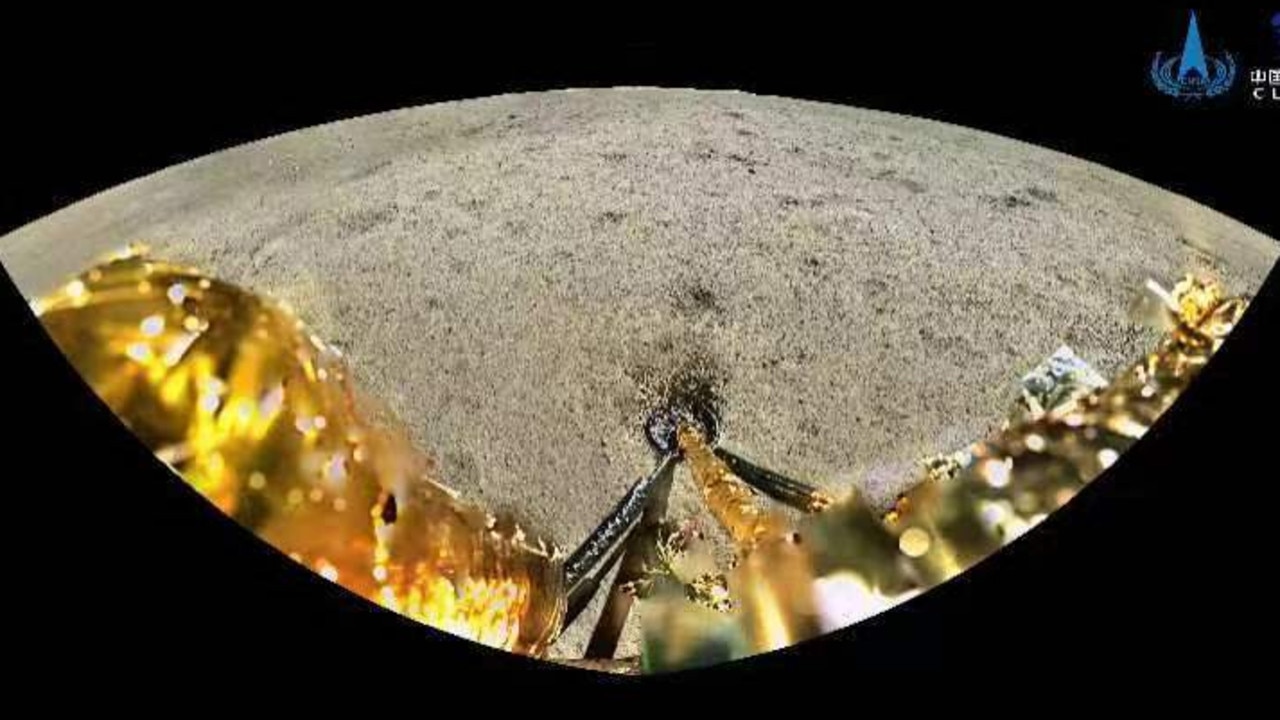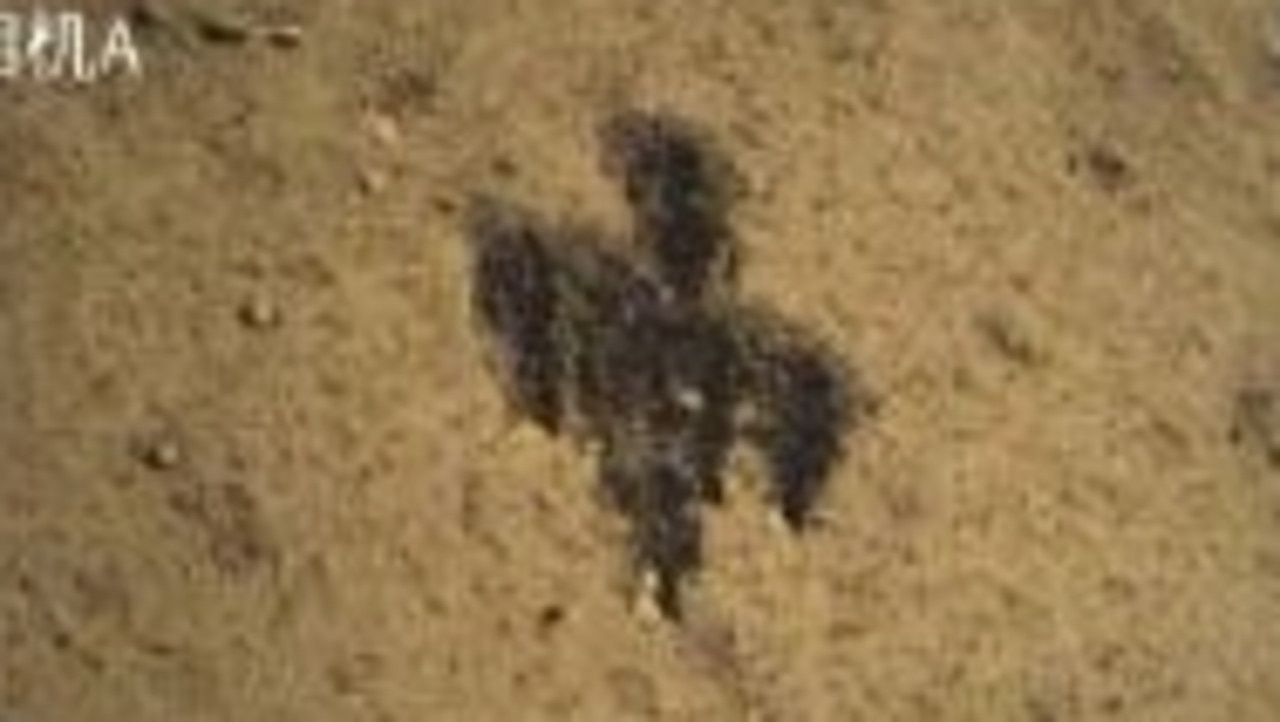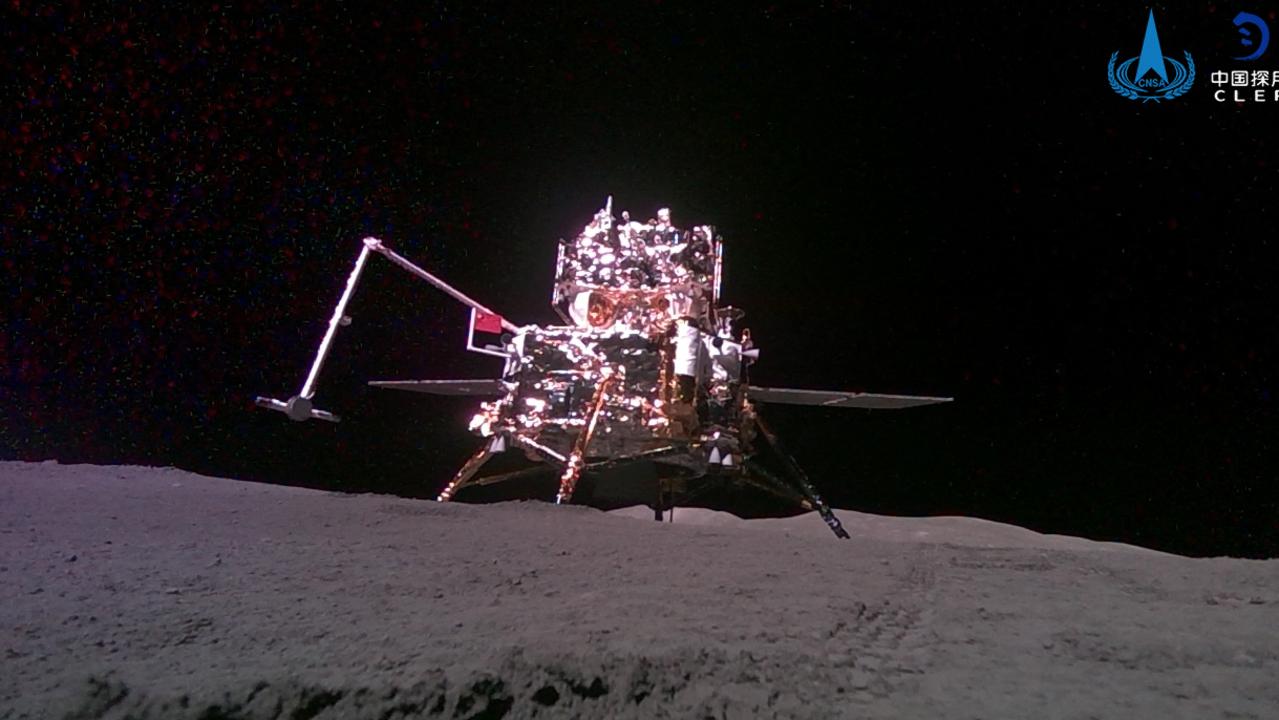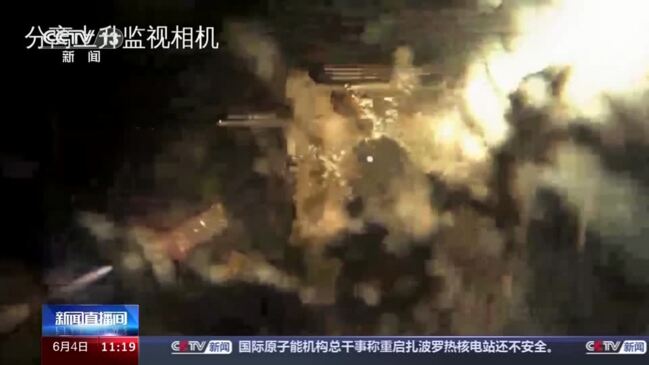China leaves its mark on the far side of the moon after historic lunar mission
China has left a reminder of its historic mission to the far side of the moon on the lunar surface. Its spacecraft is bringing home rocks that may explain how planets are formed

READING LEVEL: ORANGE
China’s historic mission to the far side of the moon has come to an end – but they’ve left behind a bit of graffiti*.
The unmanned Chang’e-6 probe* lifted off from the moon on Tuesday morning after collecting samples and unfurling* a Chinese flag. Footage of the probe leaving the lunar surface went viral on local social media site Weibo, with people claiming a mark on the ground resembled the Chinese character “zhong”.
Zhong is the Chinese-language word for middle or faith and loyalty.
“There is a Chinese character on the back of the moon,” broadcaster CCTV posted on Weibo.
“After collecting samples, the moon’s surface now shows a ‘Zhong’ character.”

China became the first country to send a space mission to the far side of the moon – also known as the “dark side” – with its probe landing on June 2 and spending two days collecting samples from a huge crater* using a drill and robotic arm.
State news agency Xinhua described the probe’s relaunch back to Earth as “an unprecedented* feat* in human lunar exploration* history”.
Analysis of the samples will allow scientists to research the history of how the moon was formed and how it evolved* over time, mission spokesman Ge Ping said.
Scientists say the moon’s dark side – which is called that because it is invisible from Earth, not because it never sees the sun’s rays – holds great promise for research because its craters are less covered by ancient* lava flows than the near side.

Plans for China’s “space dream” have been fast-tracked* under President Xi Jinping.
Beijing has poured huge resources into its space program over the past decade, targeting a string of ambitious* projects in an effort to close the gap with the two traditional space powers – the US and Russia.
It has recorded several achievements, including building a space station called Tiangong, or “heavenly palace”.
Beijing has landed robotic rovers on Mars and the Moon, and China is only the third country to independently put humans in orbit.
China aims to send a crewed mission to the Moon by 2030 and plans to build a base on the lunar surface.
The US is also planning to put astronauts back on the Moon by 2026 with its Artemis 3 mission.

POLL
GLOSSARY
- graffiti: the marking of a public space
- probe: an unpiloted, unmanned device sent to explore space and gather scientific information
- unfurling: spreading out from a rolled-up state
- unprecedented: never done before
- feat: achievement
- exploration: the action of exploring an unfamiliar area
- evolved: developed gradually
- ancient: belonging to a long time ago
- crater: a large bowl-shaped hole in the ground
- fast-tracked: to speed up the progress of something
- ambitious: having or showing a strong desire to succeed
EXTRA READING
The greatest show on Earth
First ‘Aussie’ astronaut reaches for stars
Devil’s Comet won’t be back for 71 years
QUICK QUIZ
1. What does the mark left by the probe on the moon’s surface resemble?
2. What did the lunar probe do for two days on the far side of the moon?
3. Why is it called the far side?
4. Who has fast-tracked China’s space missions and what have they achieved?
5. What is Artemis 3?
LISTEN TO THIS STORY
CLASSROOM ACTIVITIES
1. What’s in a name?
What do you think the dark side of the moon should be named? Think if a name and write reasons for your choice.
Time: allow at least 20 minutes to complete this activity.
Curriculum Links: English, Science.
2. Extension
Why do you think that all of the countries of the world have not joined together to explore space? Use the information in the story and your research skills to write paragraphs explaining your ideas.
Time: allow at least 20 minutes to complete this activity.
Curriculum Links: English, History.
VCOP ACTIVITY
1. Vocabulary recycle
There is some vivid vocabulary being used in the article, and I am not just talking about the glossary words. Go through the article and highlight the high-level language you are impressed by in yellow.
See if you can borrow two of these wow words to reuse in your own way.
Remember vocabulary is a great way to connect with the audience, but you need to think about who your audience is so you make great word choices. Who will the audience be in your recycled sentences?

